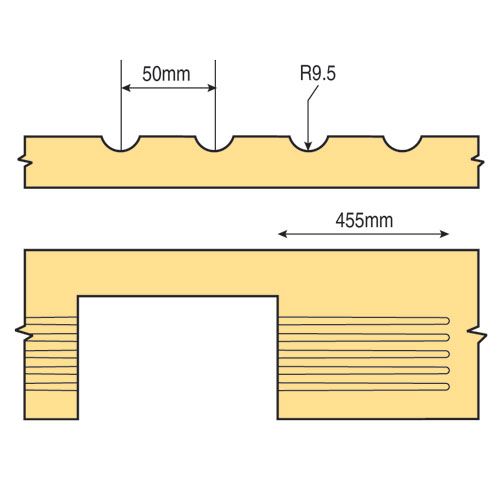Routing On-site Jig FAQs
Routing On-site Jig FAQs
Yes, use HJ/1 which are low profile bushes and fit these to the jig rather than the original bushes.
No, the correct combination of 12.7mm diameter cutter and 30mm Guide bush has to be used as the offset needed between cutter and guide bush is 8.7mm, any other combination will result in a poor joint.
A masons mitre joint is the joint that is formed using the Trend worktop jigs.
There are a selection of cutters that are suitable: 3/83X1/2TC, 3/83DX1/2TC, 3/85X1/2TC, 3/83MX1/2TC, RT/11X1/2TC & RT/11MX1/2TC.
The trapezium shape hob will require the use of the KWJ900 worktop jig. This jig cuts the corner mitre using one cut at 45 degrees and the other at 90 degrees, which gives more space for the hob. If the hob was square then either the KWJ900 or COMBI1002 could be used.


The fingers on the Lock Jig allow the jig to be lifted off the door edge by up to 6mm. This prevents the guide bush from catching the door.
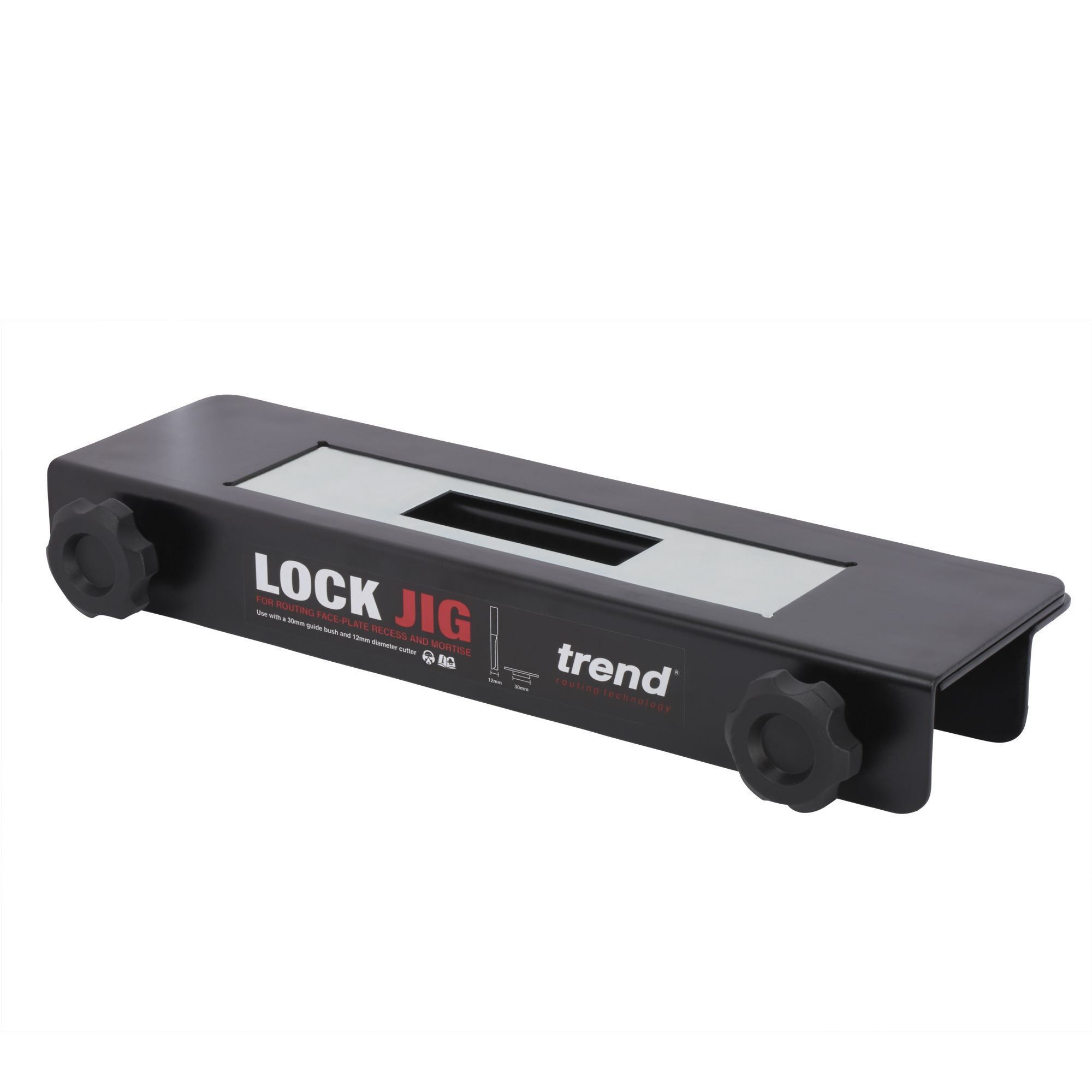

The GB30A should not be used on thin internal doors as the guide bush can contact the jig body. We advise GB30 with 6mm spigot length is used.
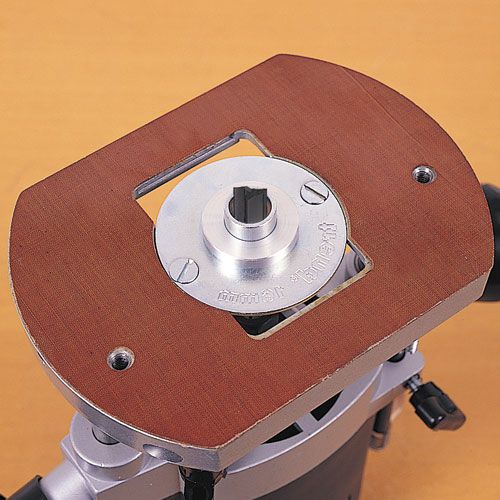

What is the recommended depth of recess for the worktop connectors or panel bolts in a 40mm worktop?
The recommended depth is 28mm.
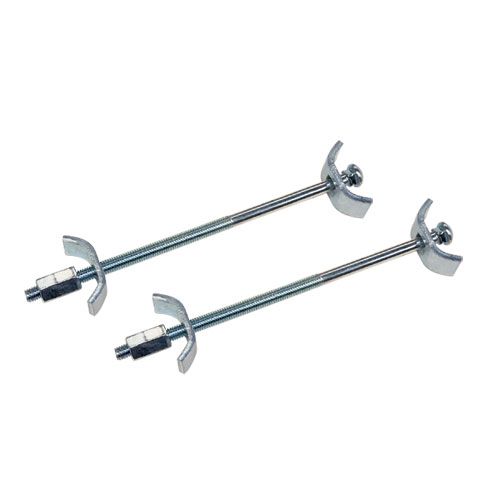

Yes and no because although the mortise could be recessed the faceplate would require some work with a chisel to finish it off. Also special sizes of plate may be required.
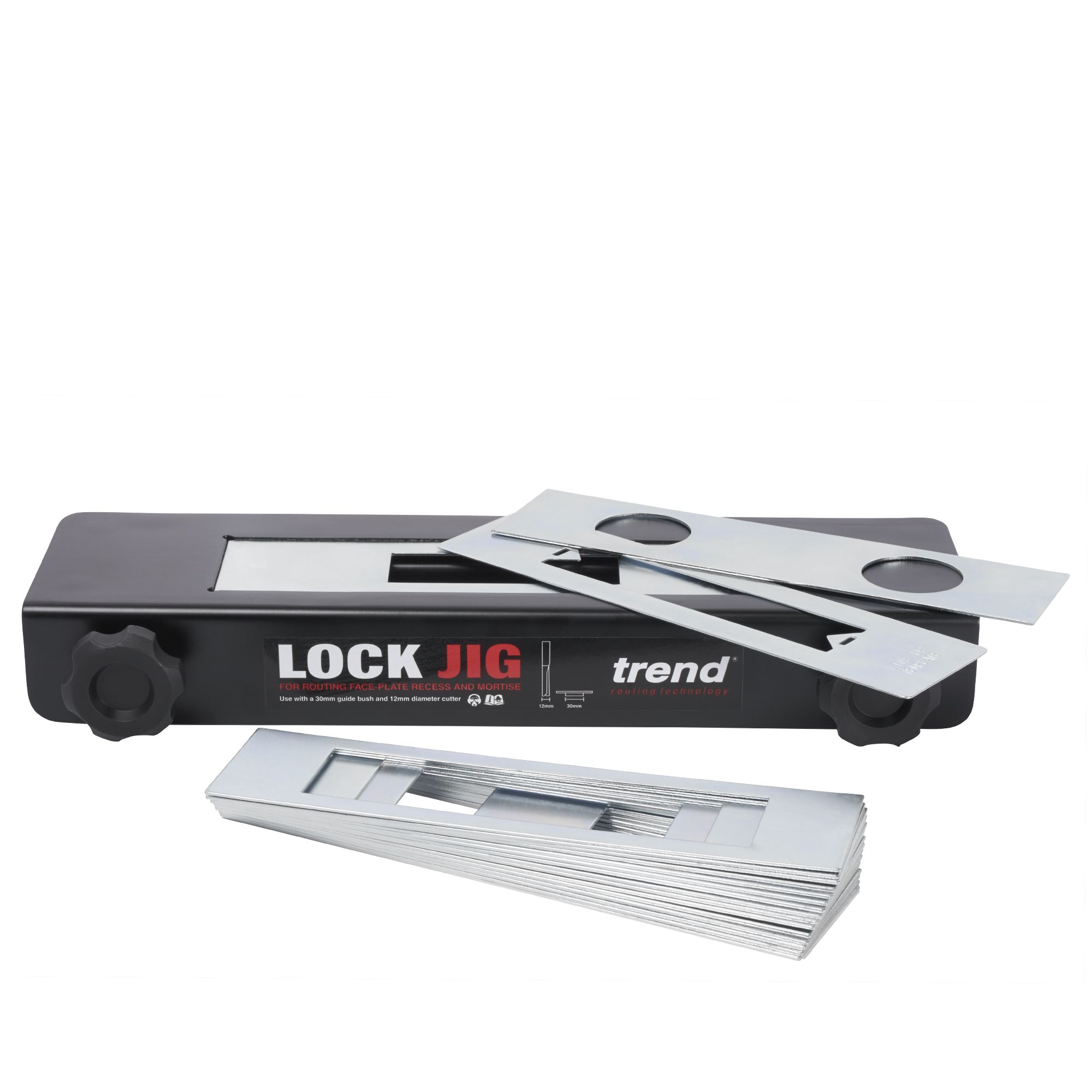

All cut lengths are proportionate to their diameter and shank sizes, a cutter with sufficient length to cut through a worktop would be too weak on 1/4 shank.
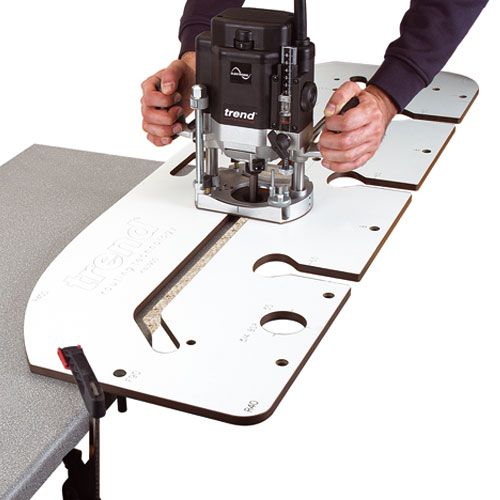

No you can use the collar that comes included with the Lock Jig. This fits over the top of the GB160, which will then increase the diameter to 30mm.
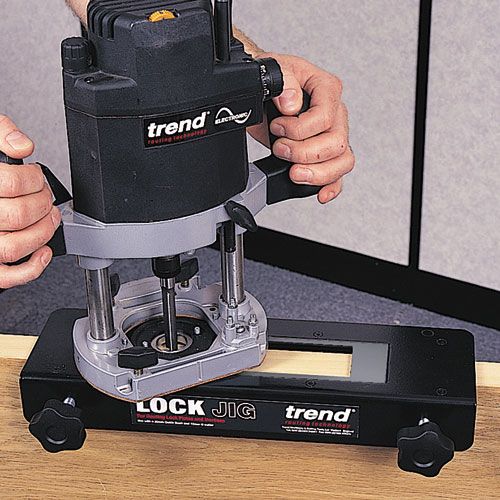

The Hinge Jig includes the jig complete, 2 bradawls for fixing the jig, T handle hex key for adjusting the jig and the appropriate guide bush GB160, the only other item required is the cutter Ref: 3/8LX1/4TC.
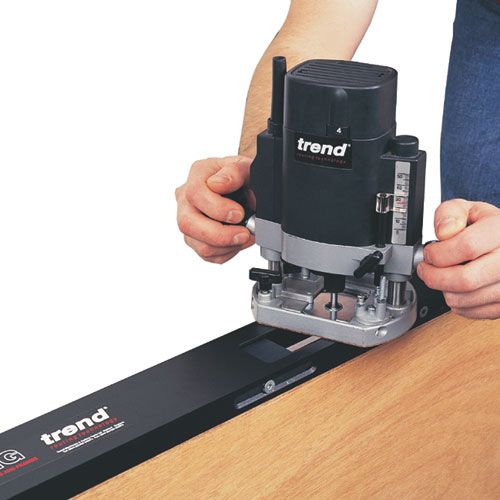

9.5mm radius, 19mm diameter, 79.5mm overall length, 1/2inch diameter.
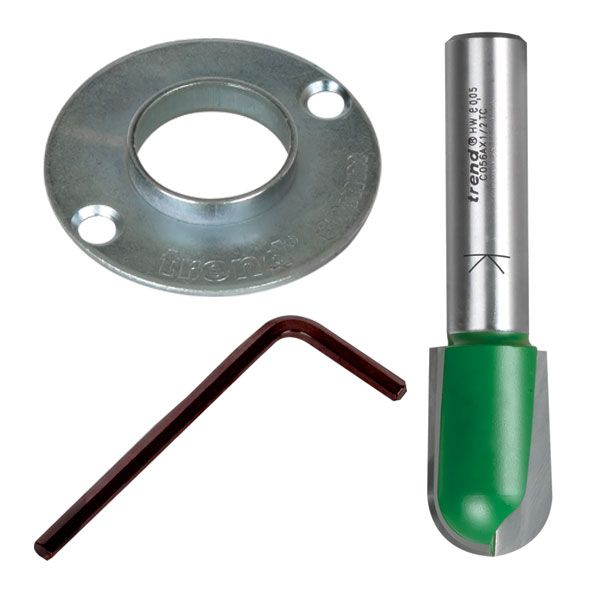

No, not without re positioning.
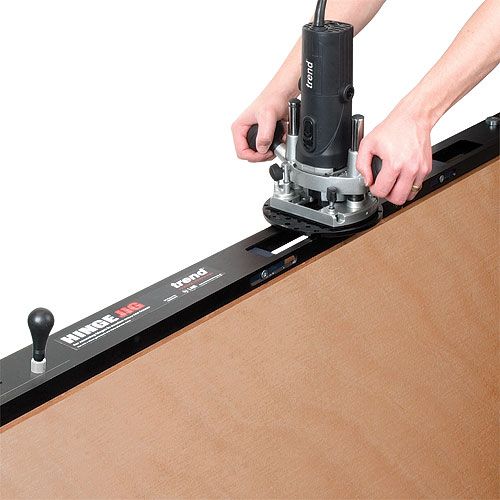

If you fit a GB240 guide-bush, which has a 24mm diameter and longer spigor) and use a 20mm diameter cutter e.g. Ref: TR20DX1/4TC then it will work because the offset between the cutter and the guide-bush still remains 2mm each side.
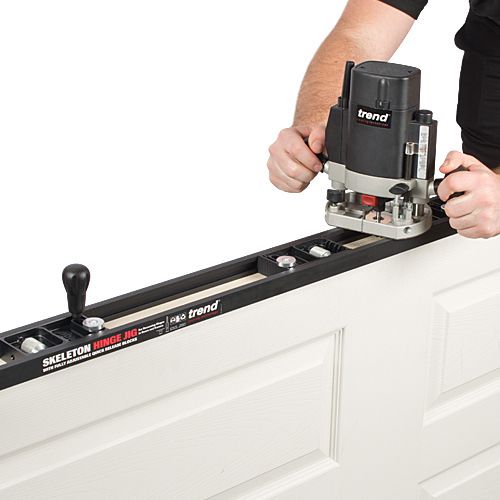

Fixed at 90 degrees.
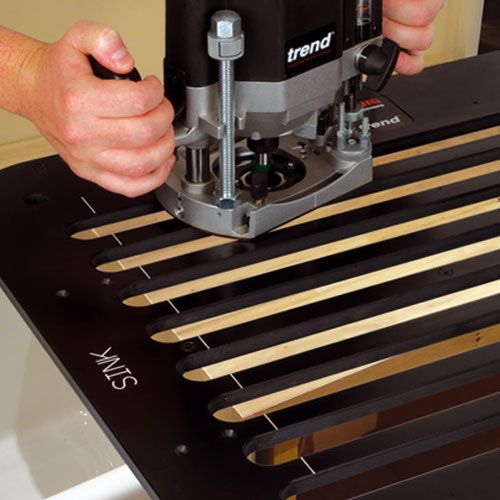

Length min = 2 5/8" - max. 5" , Width min = 3/8" - max. 1 3/8"
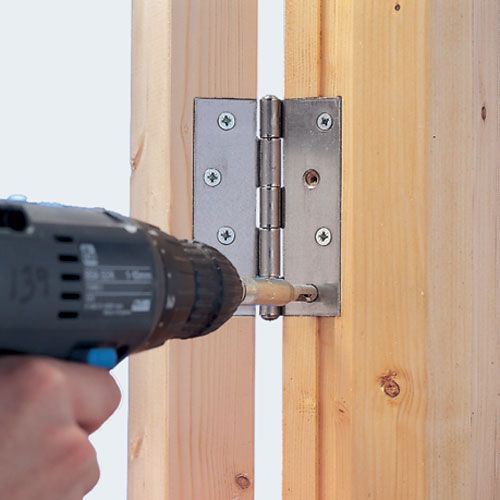

The jig requires the use of a 30mm guide bush.
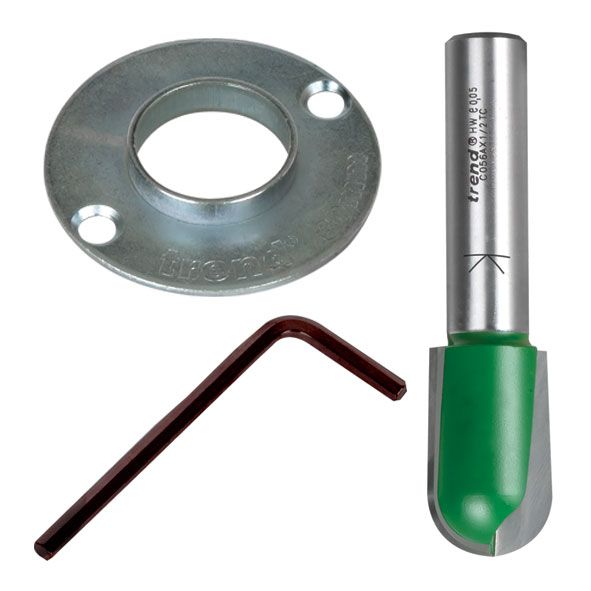

A 30mm guide bush is required reference number GB/30/A.
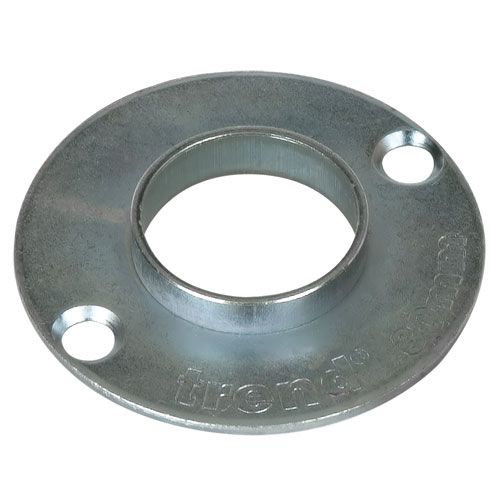

The cutter required is 3/83X1/2TC, 3/83DX1/2TC, 3/85X1/2TC, RT/11X1/2TC.
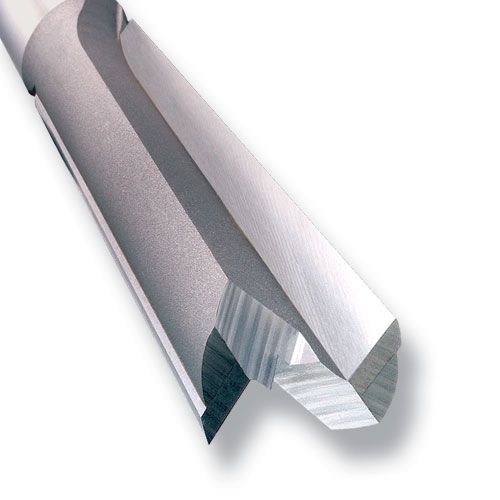

The corners need to be squared with a chisel because the router cutter leaves a radius. We offer a corner chisel ref. C/CHISEL which has a High Speed Blade for this purpose. The chisel is placed in the recess and hit with a hammer, this creates a square corner.
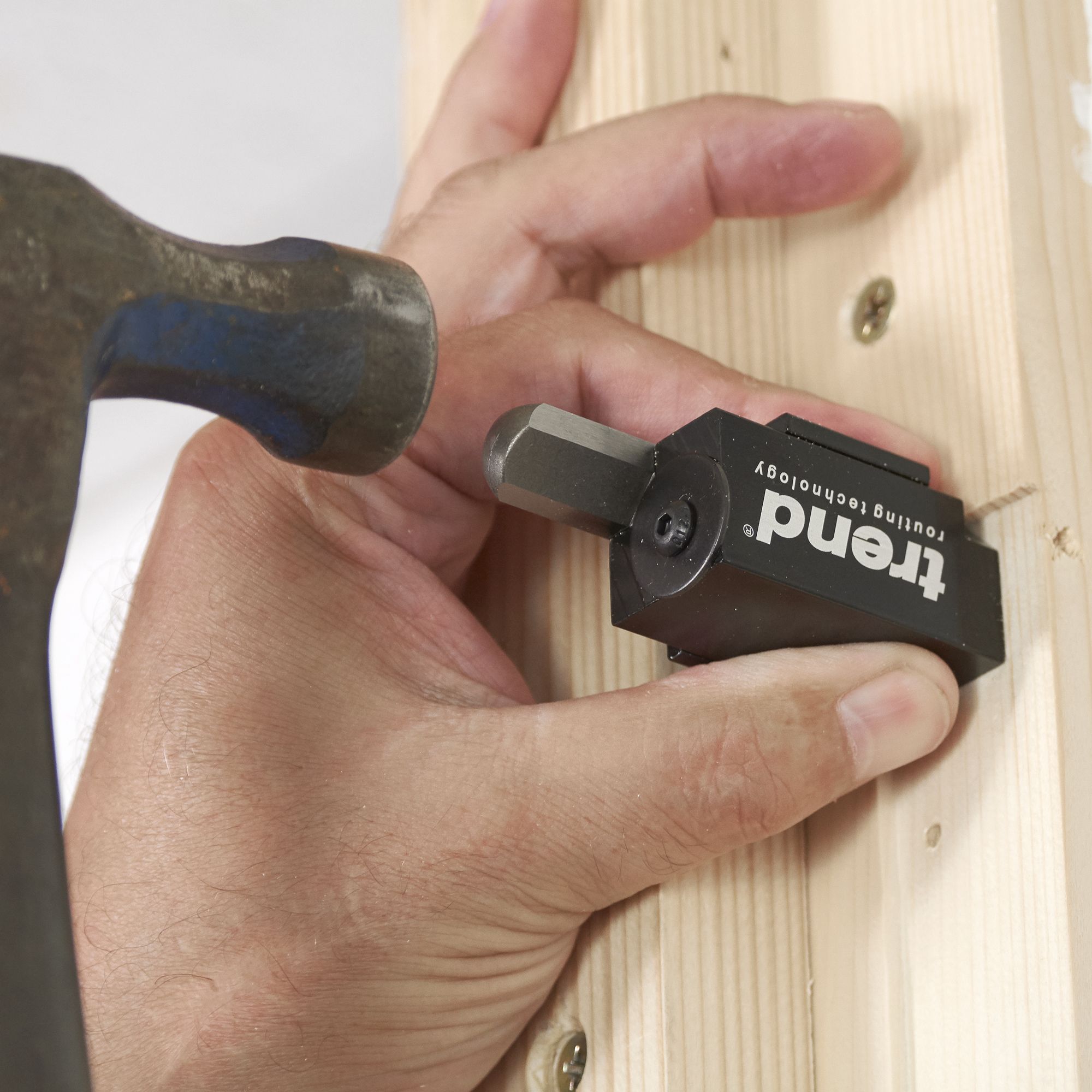

The recommended depth is 22mm.
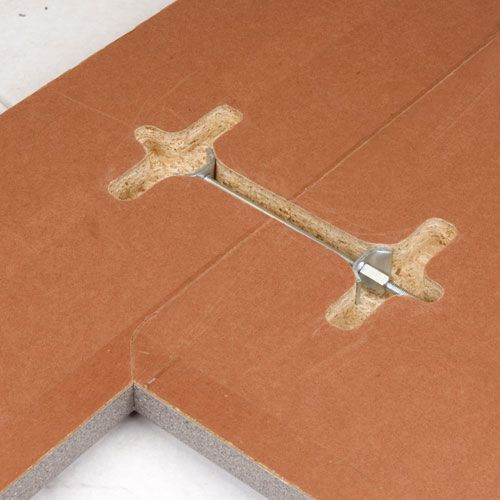

The part number is WP-HJ/10.
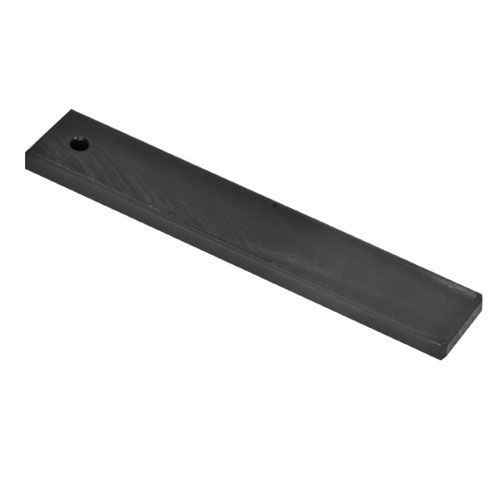

When using these cutters with the Trend Stair/Jig A always use the RH Rotation cutters, the LH Rotation cutters are for Stair trenching machines only.
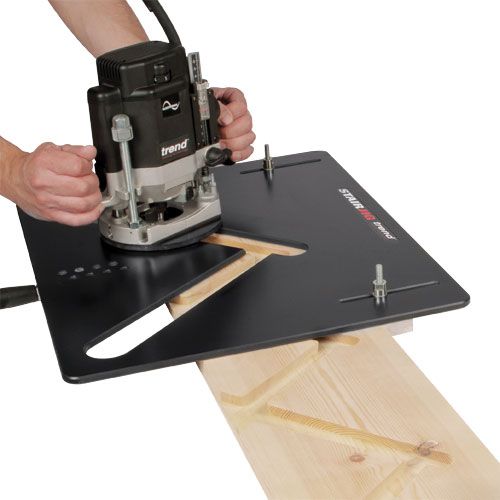

The early KWJ750P jigs came with plastic cams but there were some discrepancies in the lengths of cams, the rods are a lot more accurate and produce a much better joint.
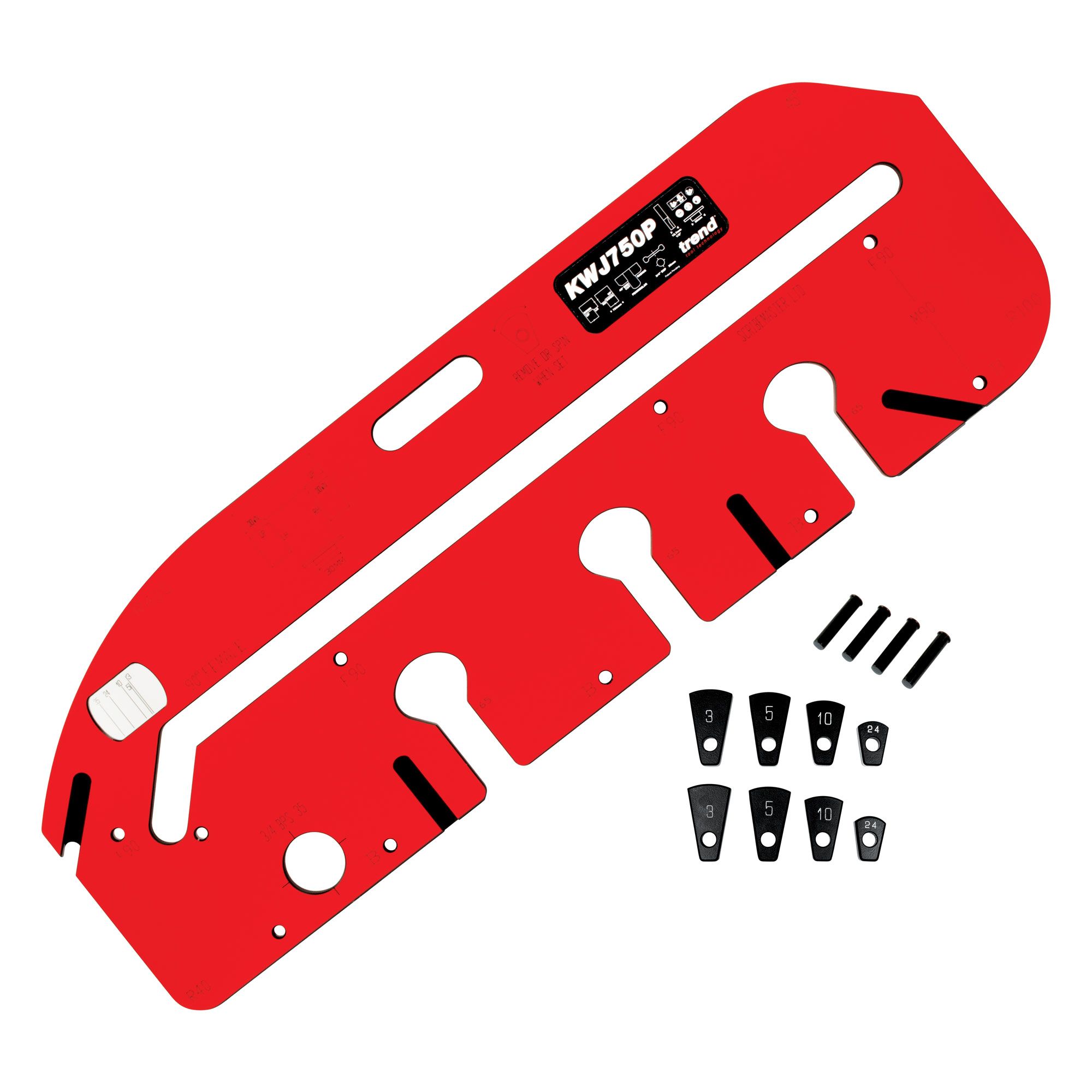

Some heavy duty routers like the T12/T14 can be a little heavy to handle, therefore the T4, T5 or the T18S/R14 are best suited.
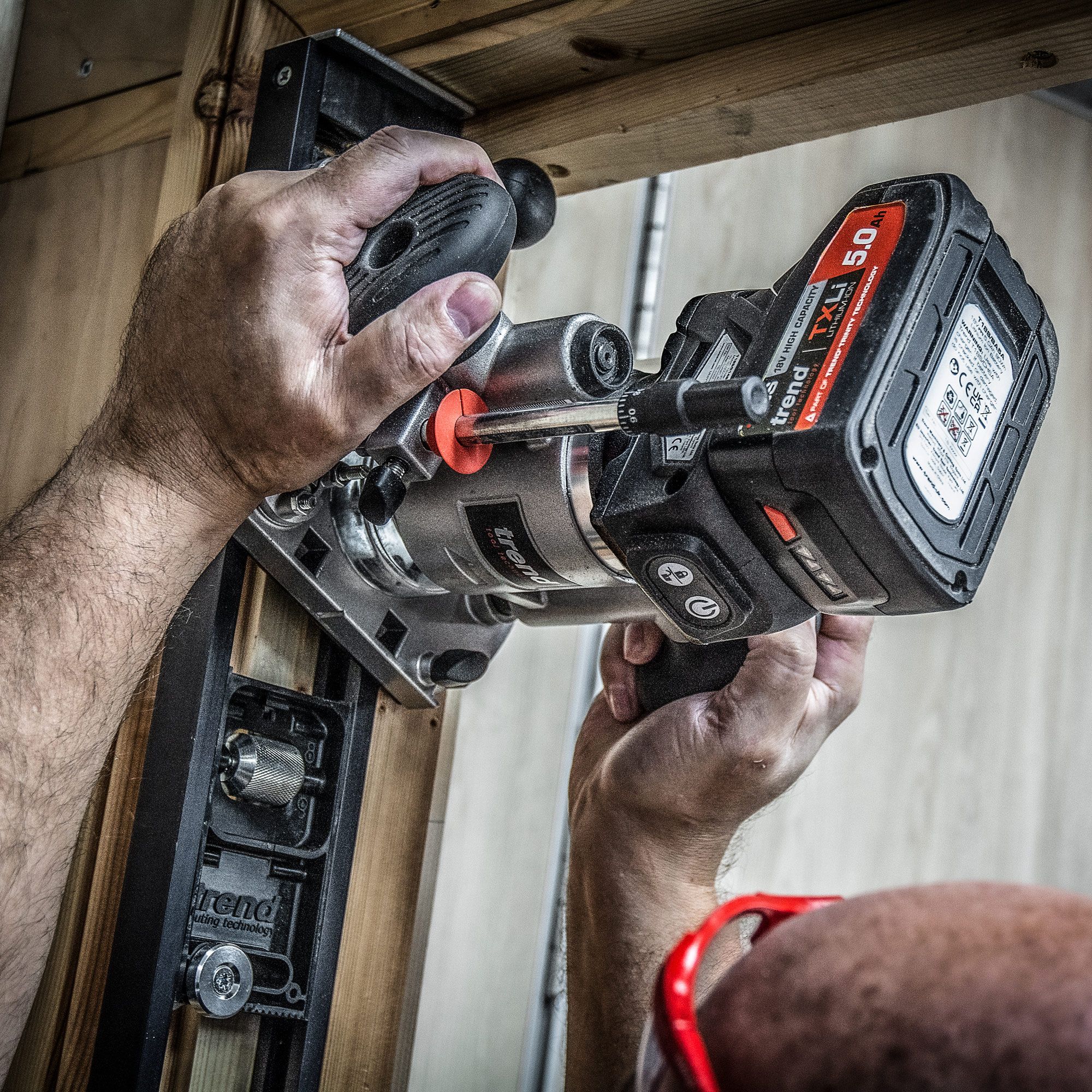

A heavy duty router of at least 1600 watts with 1/2 shank capacity.
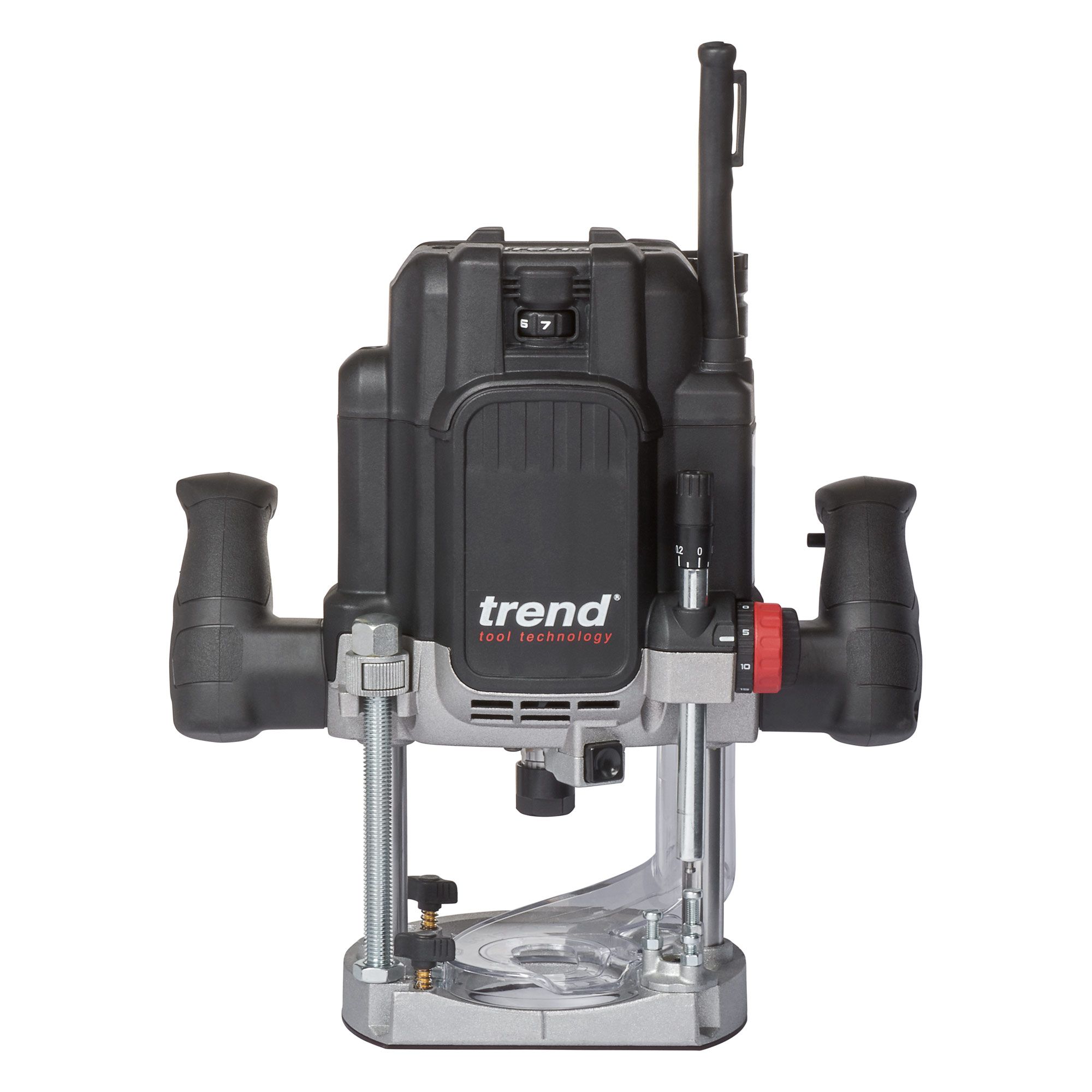

Either of the refrences: 9/5 , 46/57 or 46/150.
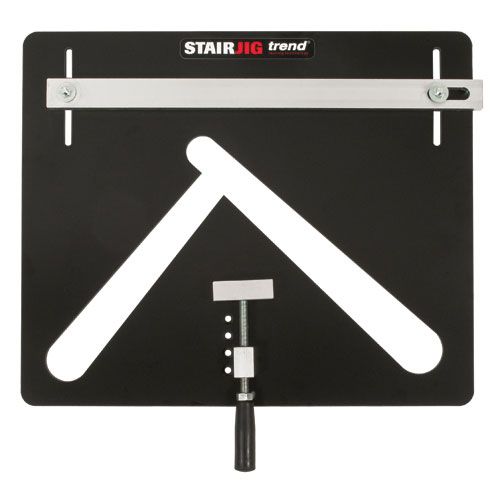

Yes you can.
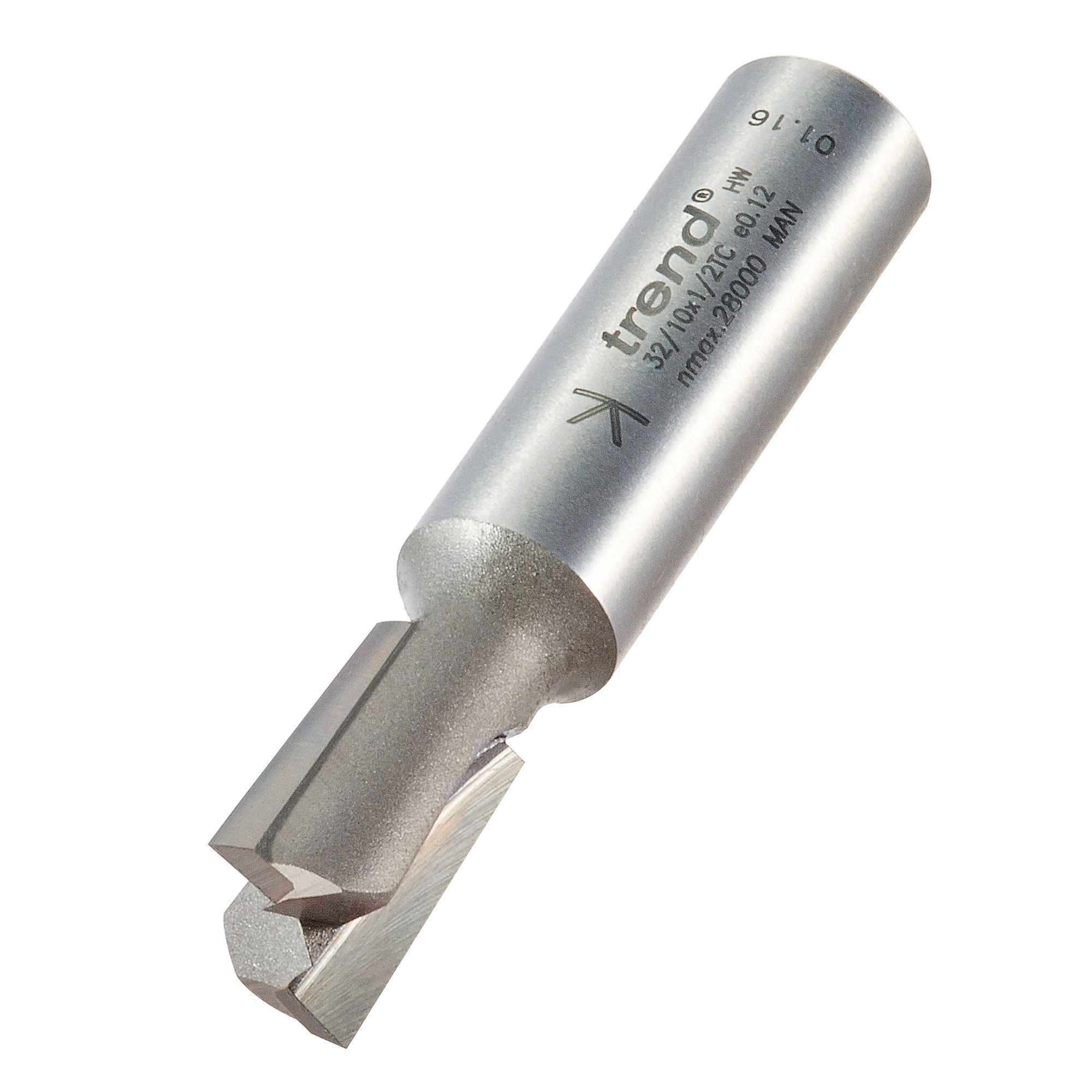

The standard radius produced with our lock jig is 6mm this is the radius from a 12mm diameter cutter. A 10mm radius can be obtained with a 20mm cutter C030A in conjunction with a GB240 24mm guide bush.
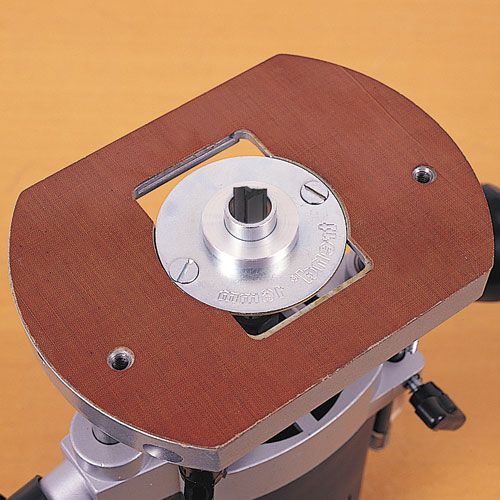

A common reason is that the guide bush is not centralised with the cutter. Use a line up pin if available. A sub-base may need to be fitted for concentricity depending on the model of the router.
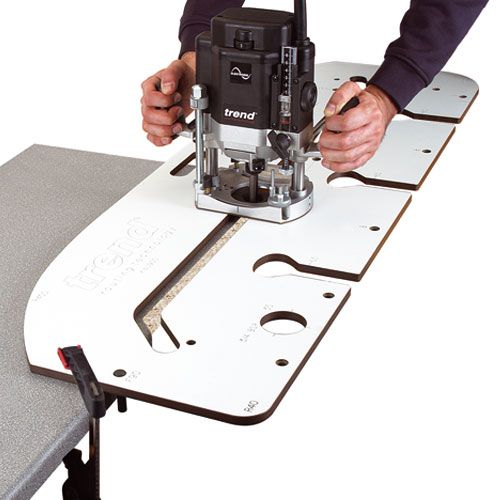

All of our jigs strait from the box will produce a 6mm radius, a 0.25 inch radius would be 6.35mm.
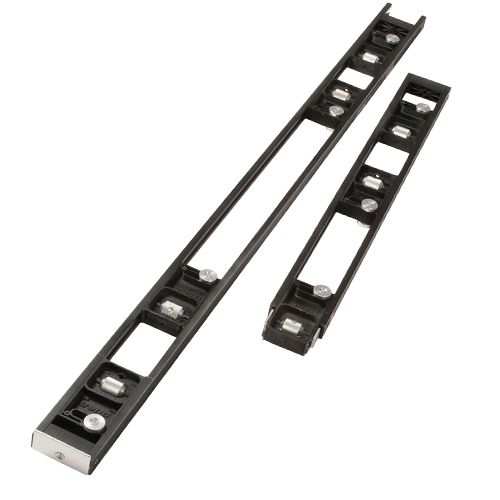

Yes, there is an insert that is placed in the jig which reduces the aperture length.
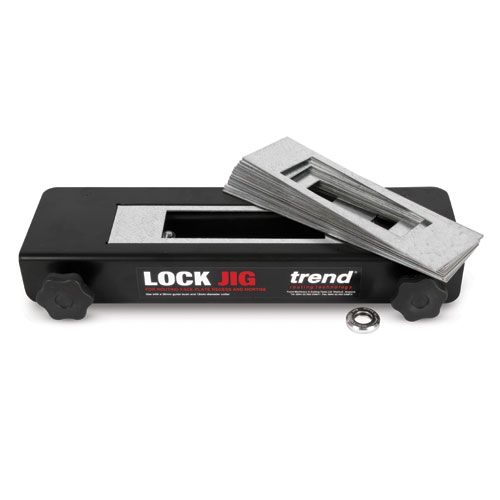

Yes we have a wide selection of other sizes available. Please call our technical department with your lock dimensions.
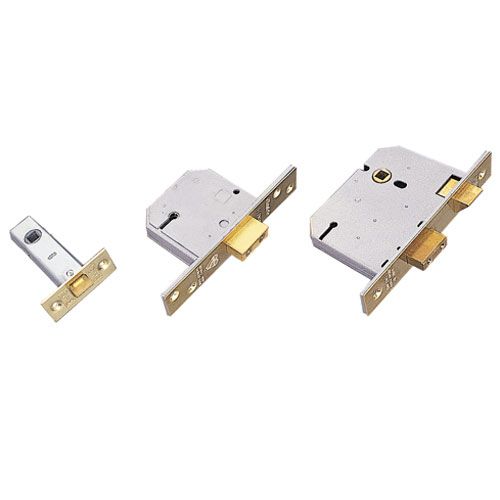

Yes, available from stock, the part number is WP-LOCK/T/14.
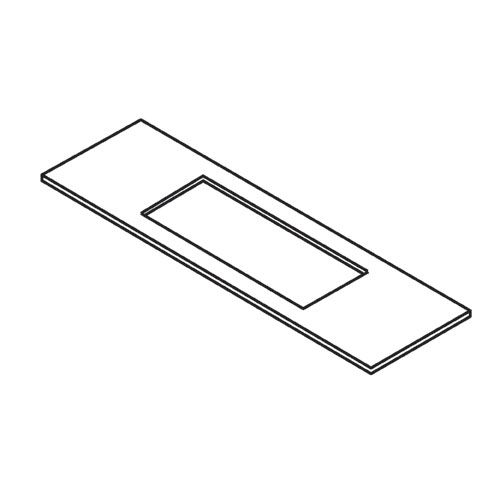

For the small latches used on cupboard doors, the two different sizes are to accommodate metric or imperial sizes.
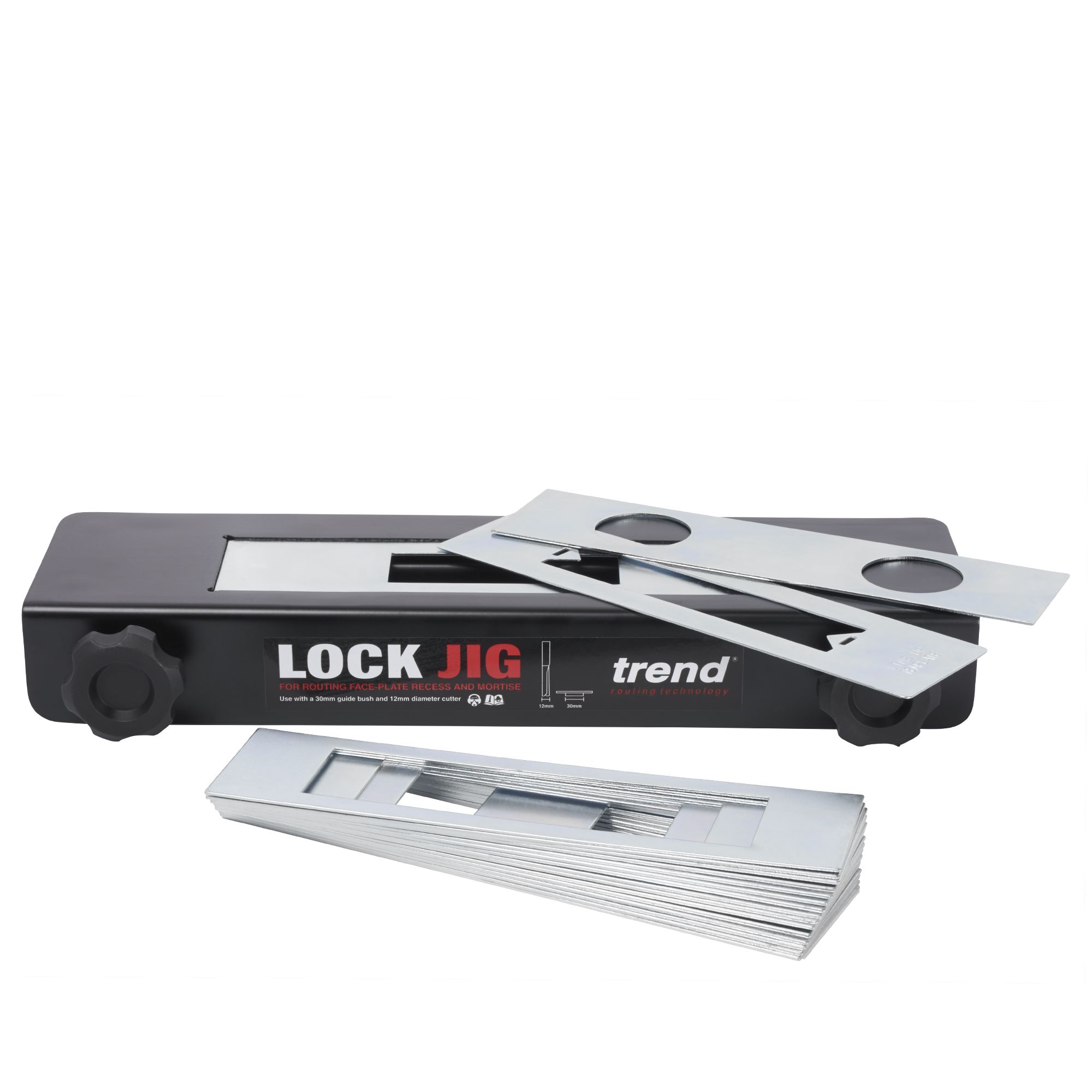

The replacement nosing piece is WP-SJA/15.
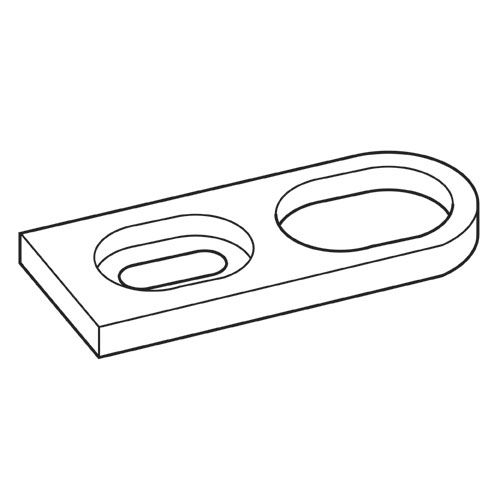

No, due to safety reasons, 63mm cut depth and 115mm overall length is all that is available e.g. 3/75X1/2TC, TR37X1/2TC, C172X1/2TC.
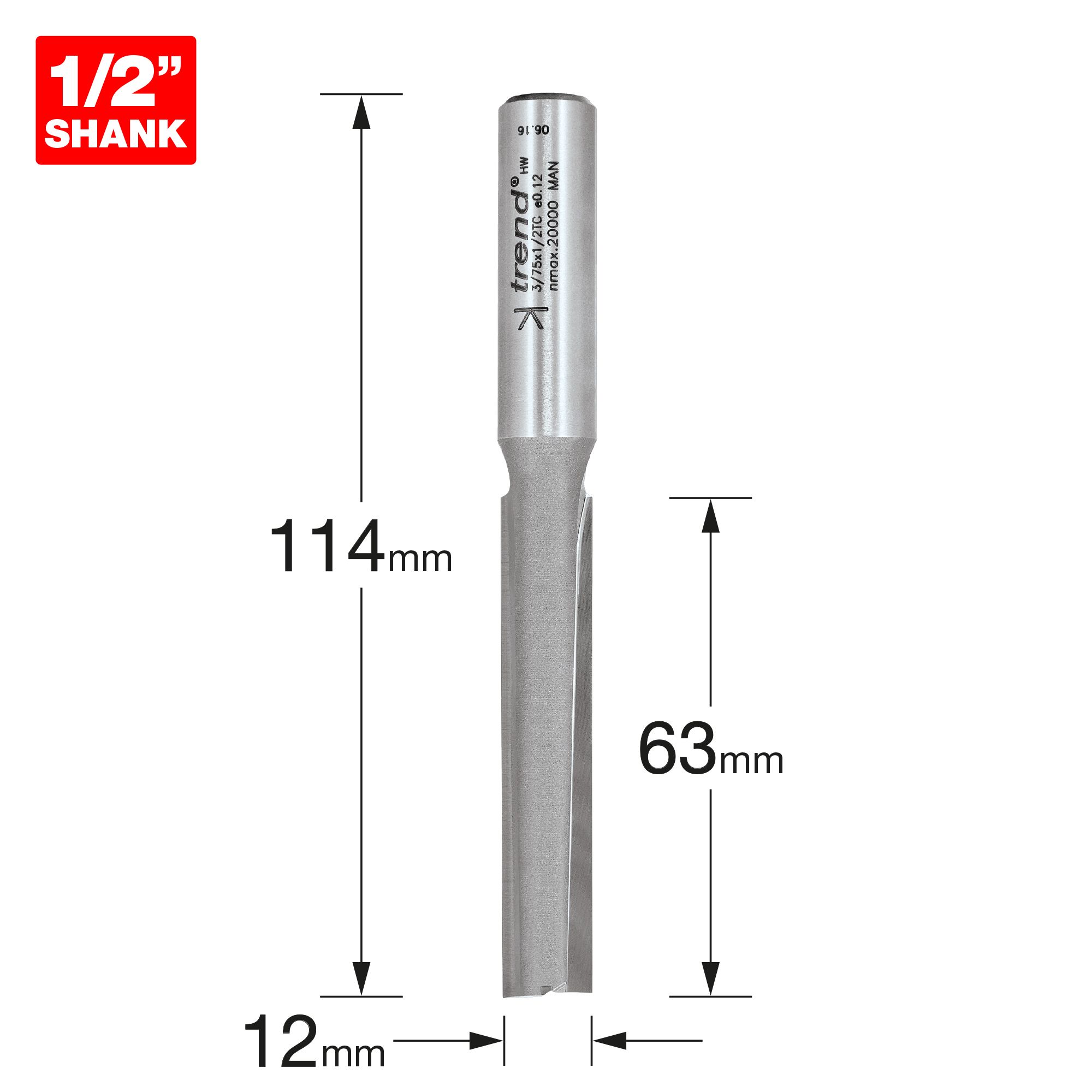

You can cut out the remainder of the depth by using a auger bit.
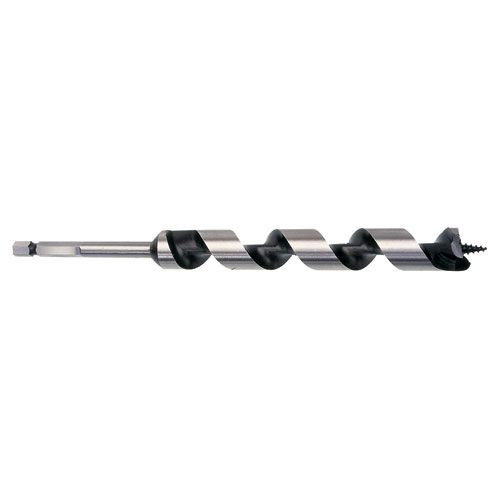

This is just a recommendation because of the heavier weight of the router which makes if difficult to recess the top hinge on the door lining or frame.
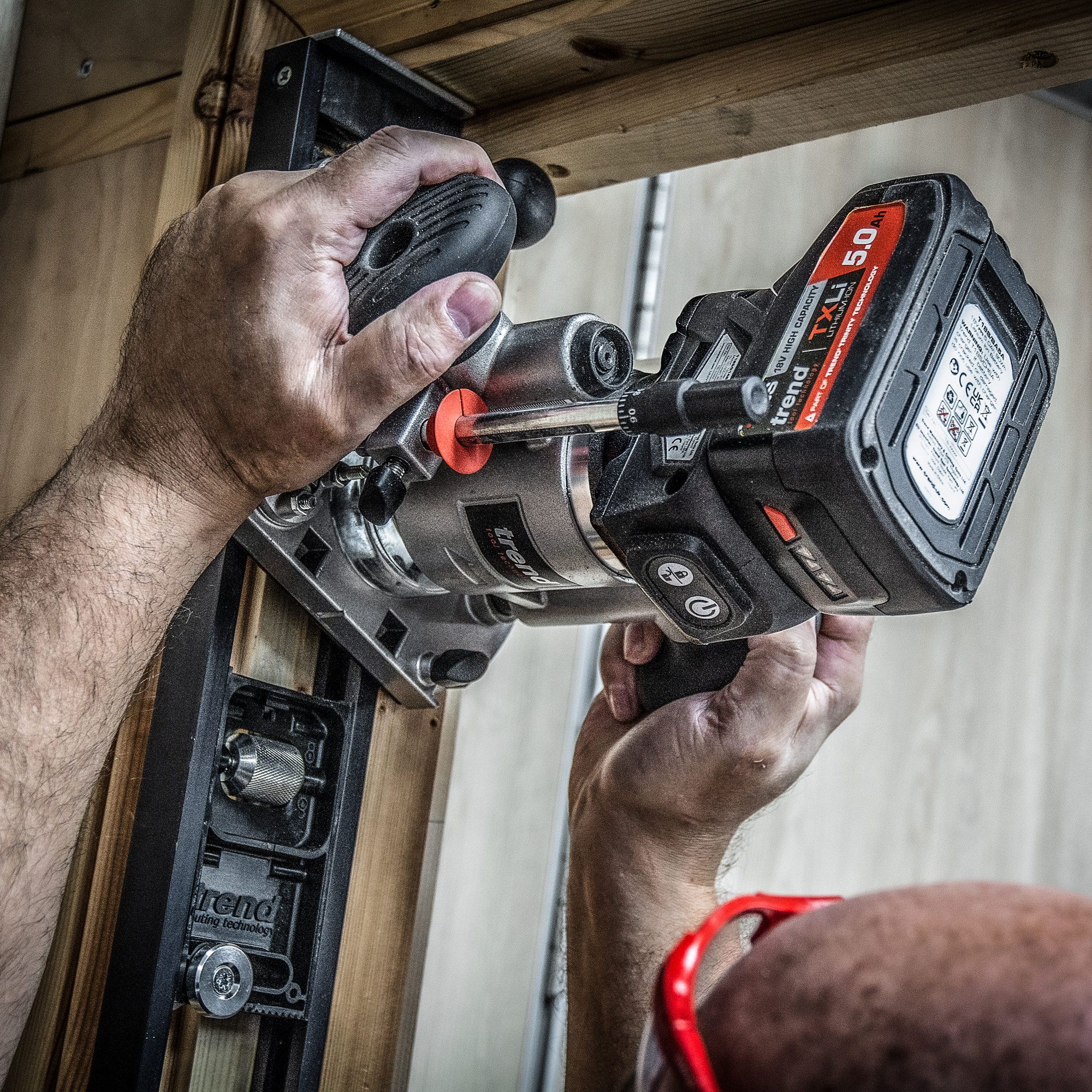

We recommened using a 3/8LX1/4TC or C019A Trend router cutter.
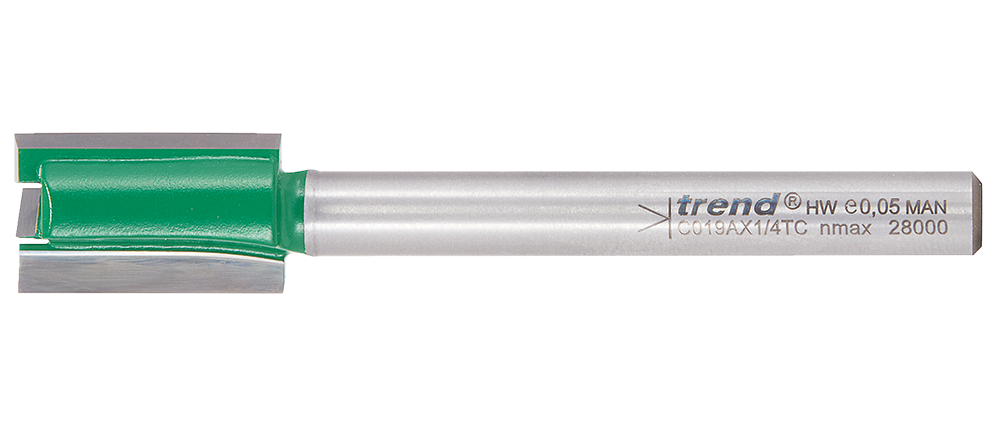

A butt and scribe joint is the joint formed using the Trend Worktop Jigs.
The guide bush should be 30mm outside diameter.
The worktop jigs are designed to work with a GB30A guide bush and A 12.7mm cutter the male and female curves on the jig are matched with 12.7mm cutters if you use a 12mm cuter the radiuses will not come together properly.
Yes in most cases the hinge jig can recess the hinges in rebated frames, especially if the door is at least 45mm thick, the hinge leaf is not more than 35mm wide & the door stops are not greater than 25mm..
Height min 5' - max 8', Thickness min 5/8" - max 13/4"

